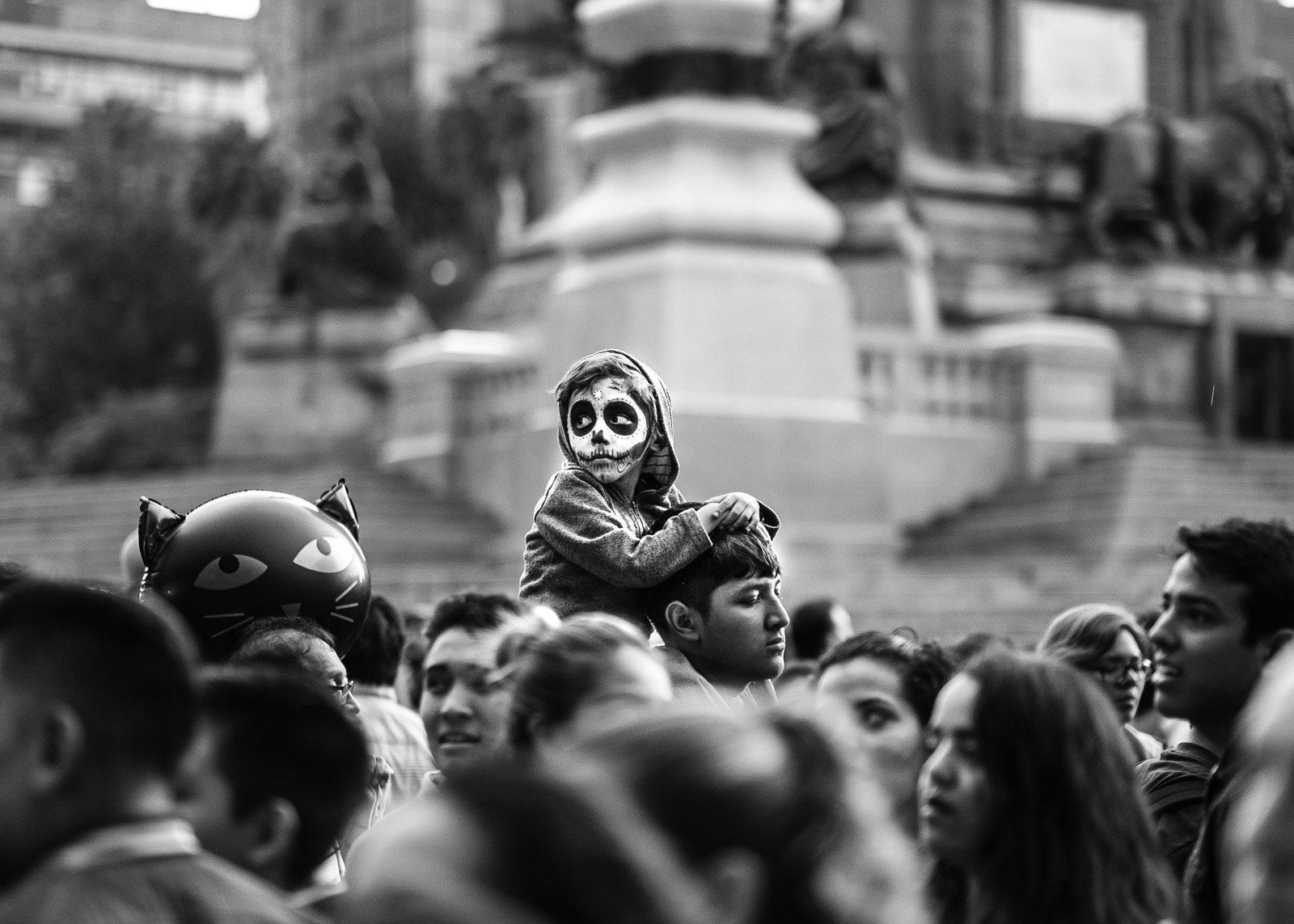
My Day of the Dead photo project was featured in National Geographic and exhibited at the Museum of World Culture.
Documenting
The Day of The Dead
I always wanted to experience and document Día de Muertos - and during my four years living in Mexico, I had the chance to do exactly that, photographing this extraordinary celebration four years in a row. See more of my photography on Instagram.
Watch how I captured The Day of the dead
Watch my behind-the-scenes of capturing the parade in Mexico City.
“Day of the Dead is a celebration of life, memory, and tradition unlike any other. From the candlelit cemeteries of Mixquic to the vibrant parades in Mexico City’s Zócalo, it’s a deeply personal yet electrifying event. ”
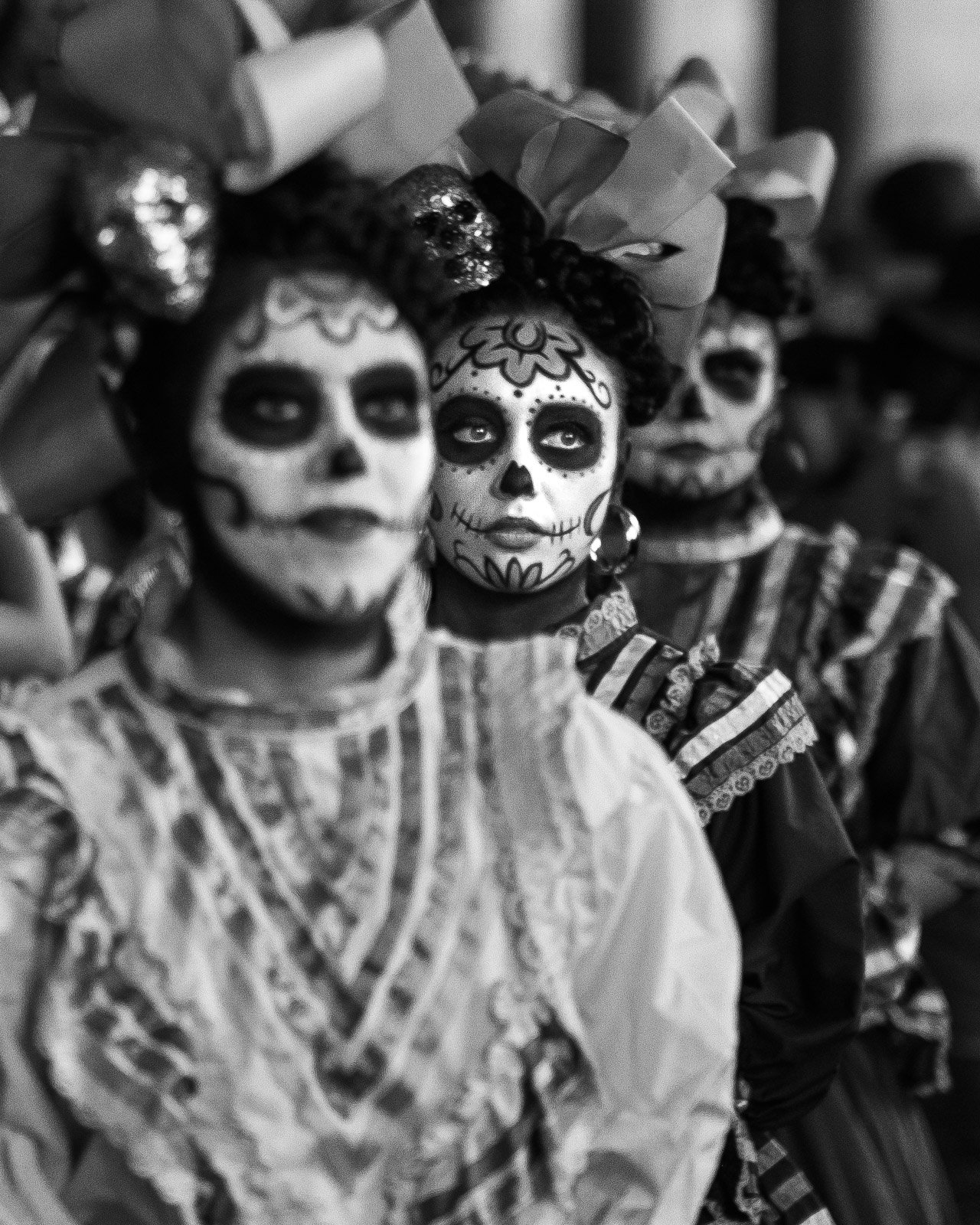
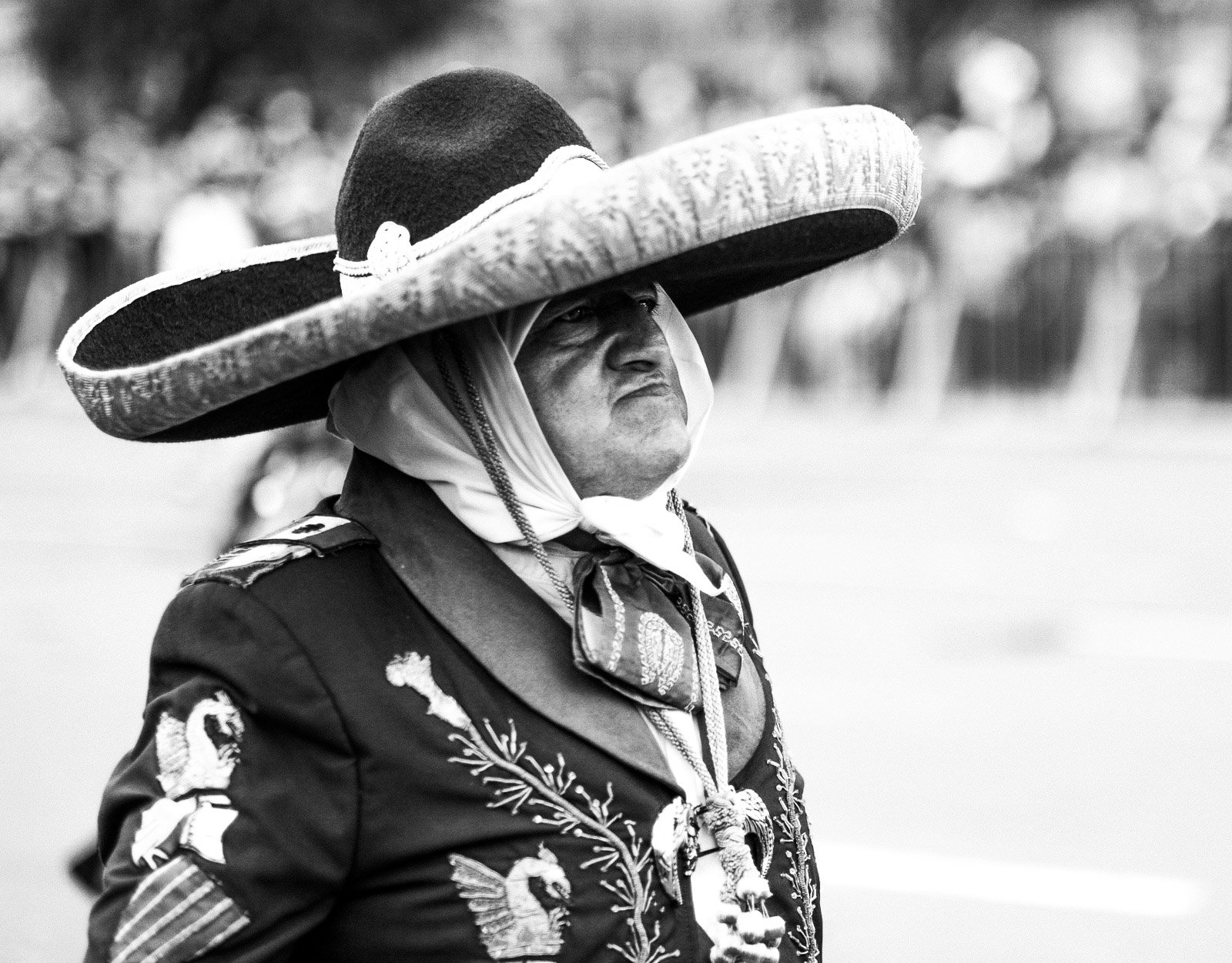
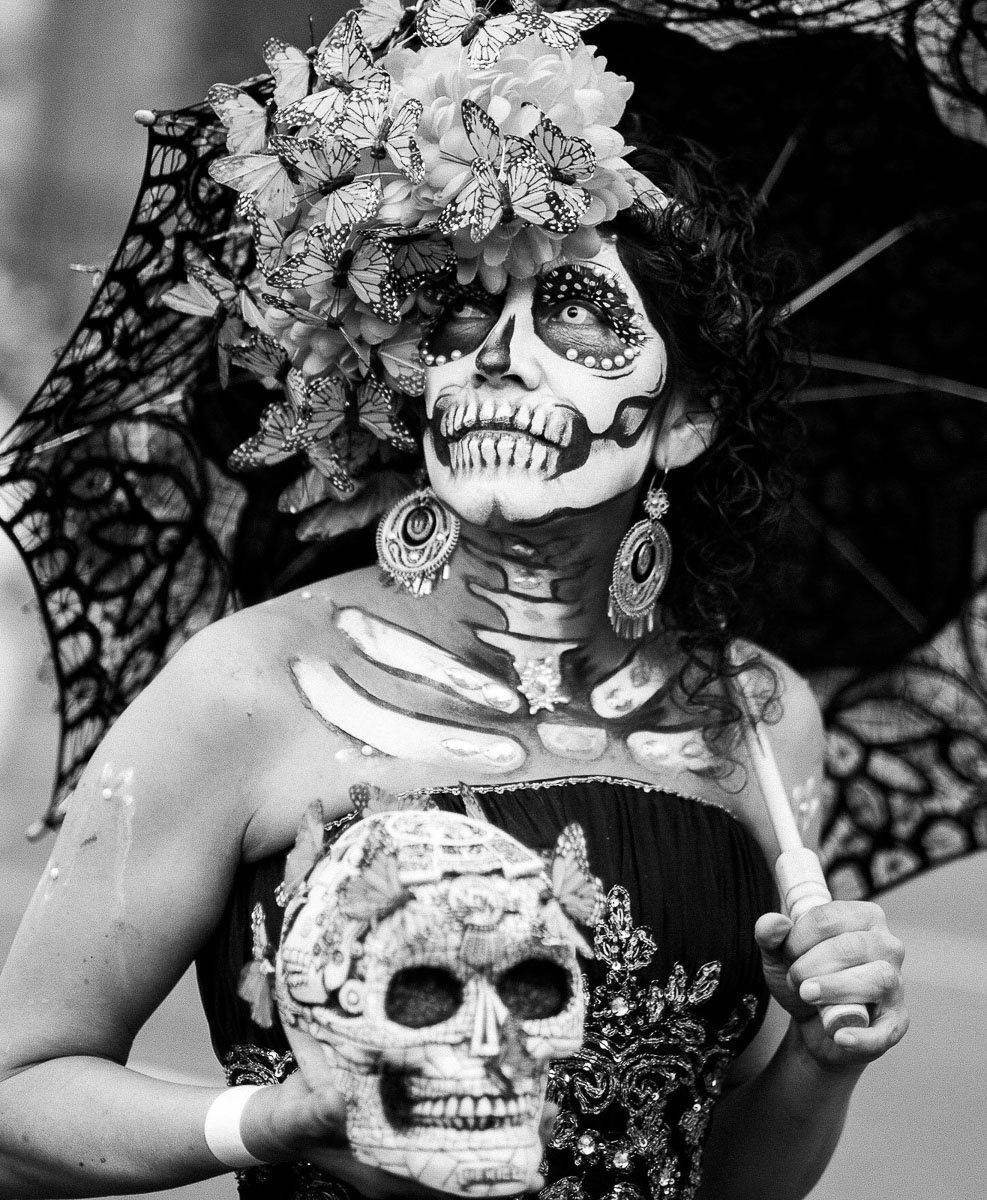
As a photographer, the Day of the Dead entices you with its vibrant cultural tapestry. You’ll get drawn to the emotional portraits, intricate face paintings, and colorful visuals that convey deep human connections. The elaborate altars and symbolic details offer a window into diverse traditions, and capturing it all, even in the night's glow, is a storytelling delight.
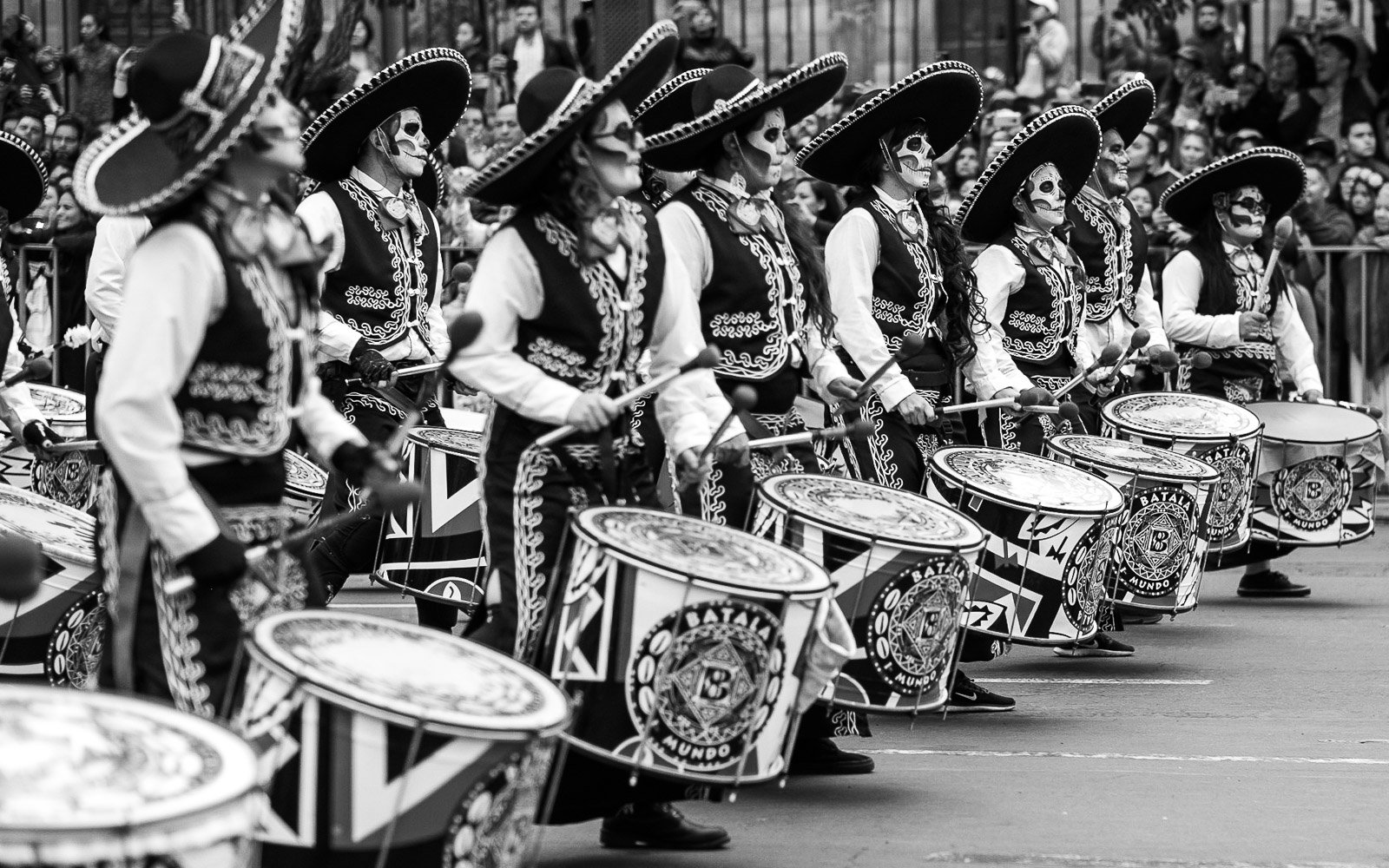

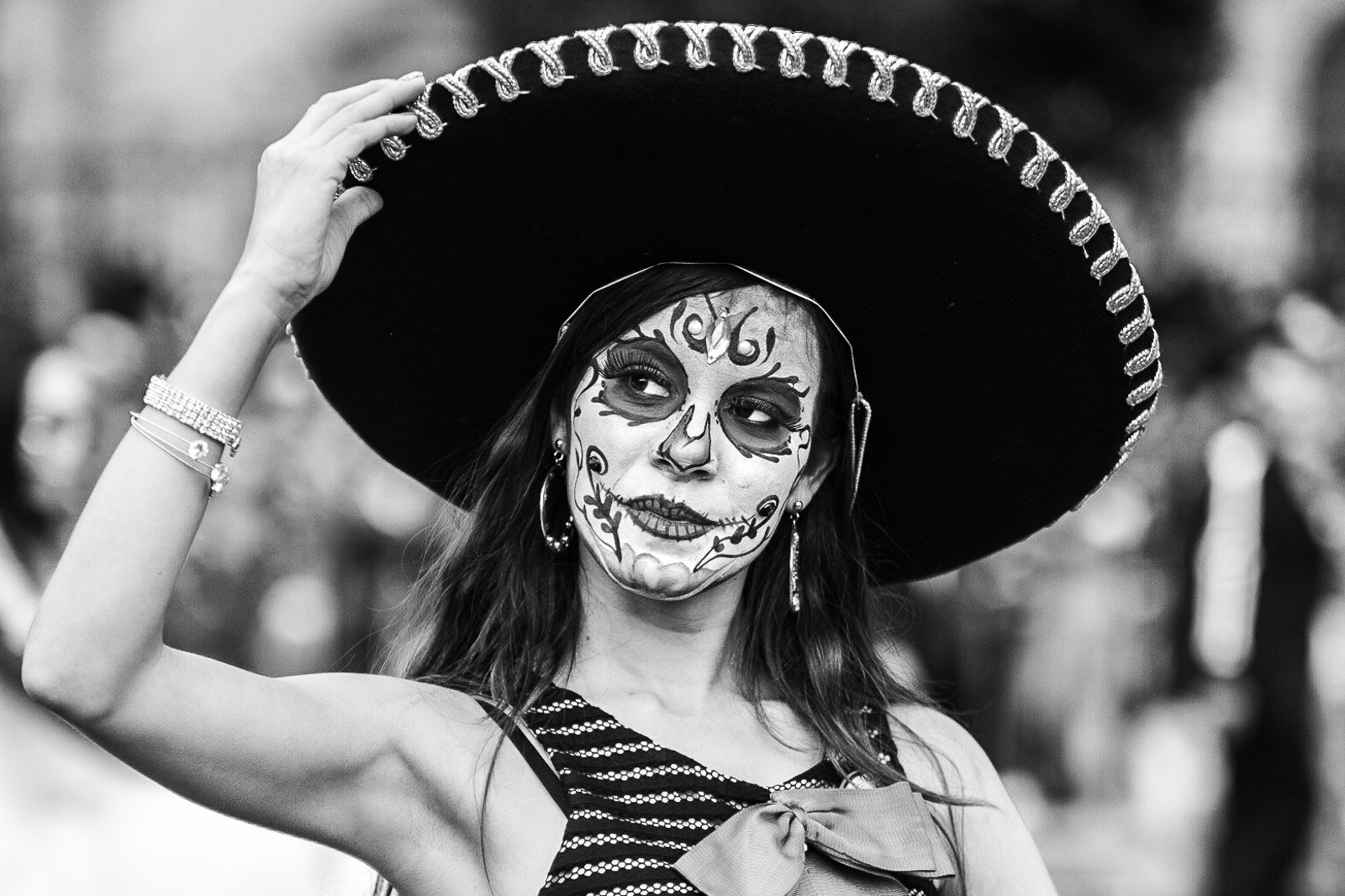
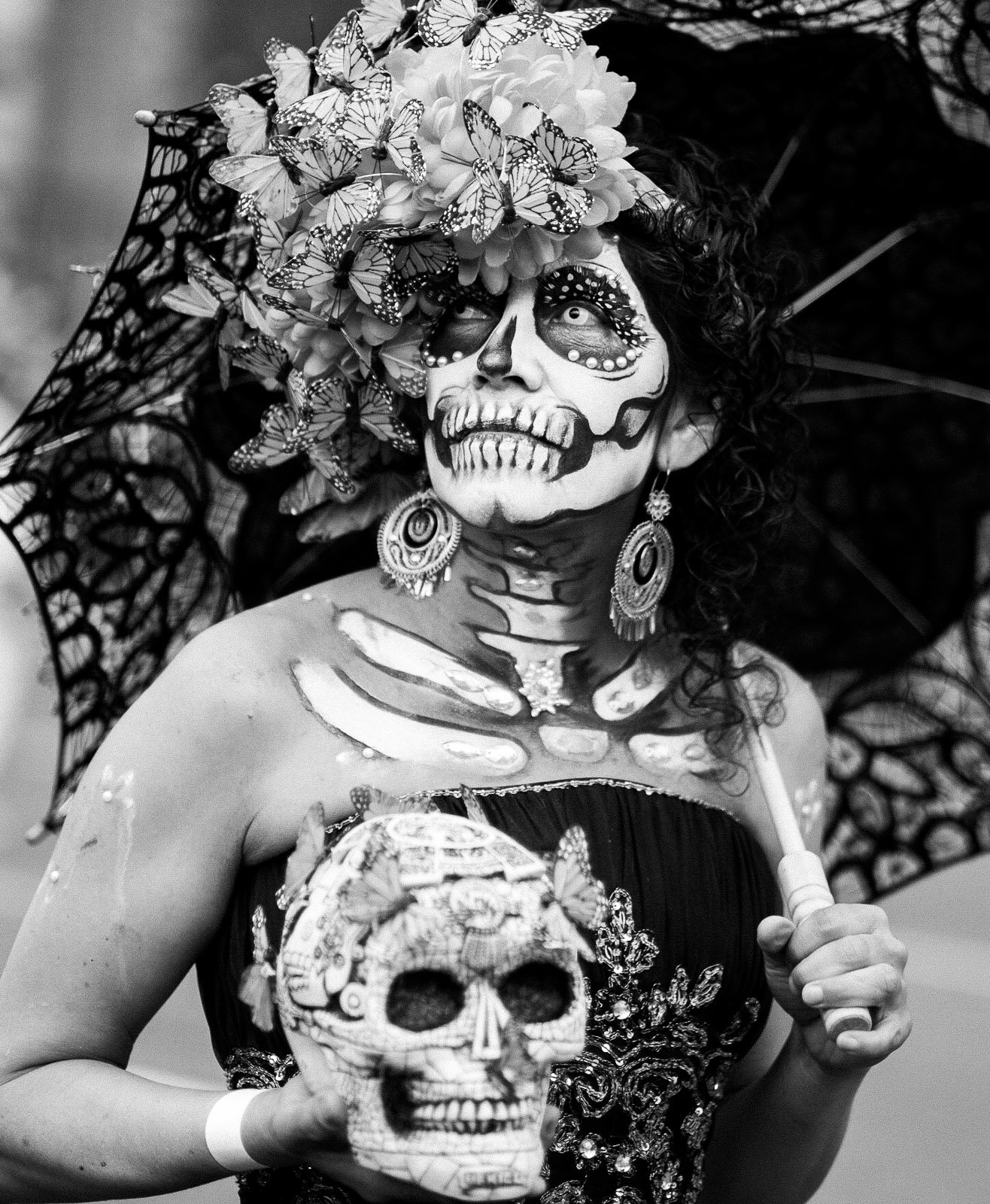


My thoughts on this spectacular event
Day of the Dead, or Día de los Muertos, is a vibrant Mexican celebration held on November 1st and 2nd to honor loved ones who have passed away. Unlike typical mourning, it’s a joyful remembrance where families believe that the souls of the deceased return to visit. Homes and cemeteries are decorated with ofrendas, altars adorned with flowers, photos, candles, and favorite foods of the departed.
Immersed in Tradition: Being in Mexico City as a photographer for this celebration was surreal. I walked among families sharing heartfelt memories, capturing the beauty of their altars and the lively processions. It’s such a special event, and something that a lot of photographers would love to include in their portfolio and experience as a whole.
Connecting with Families: Many families invited me into their celebrations, sharing stories and allowing me to capture the spirit of the day. The openness and warmth I encountered made the photos incredibly personal.
Creative Challenges: The mix of low light and intense colors challenged me, but I embraced the natural lighting to keep the authenticity of each shot.
Global Recognition: My photos were featured by National Geographic and exhibited at the Museum of World Culture, allowing me to share this powerful tradition with a broader audience.
What’s the Difference Between Day of the Dead and the Day of the Dead Parade?
The Day of the Dead (Día de los Muertos) happens on November 1st and 2nd, when families honor their loved ones who have passed away. It’s celebrated with altars (ofrendas), graveyard visits, and traditional food, focusing on personal and sacred moments.
The Parade is a public event, introduced in 2016, inspired by the James Bond film Spectre. It’s a colorful show with floats, costumes, and performances, showcasing the artistic side of Mexican culture.
Why Watch the Parade in Zócalo, Mexico City?
The parade happens in late October, before the actual Day of the Dead. Watching it in the Zócalo (Mexico City’s main square) is a must because:
Stunning Backdrop: The Zócalo is decorated with giant skulls, marigolds, and lights.
Cultural Celebration: See floats, Catrina costumes, and traditional dances.
Vibrant Energy: The mix of locals and tourists creates an electric atmosphere.
Photo-Worthy: Perfect for capturing bold colors, costumes, and lively scenes.
Key Difference in Dates
Day of the Dead: November 1st and 2nd (traditional, family-focused).
Parade: Late October (modern, theatrical celebration).
Both are worth experiencing: the parade for its grand show and the Day of the Dead for its deep cultural and personal meaning.
Best cities to capture day of the dead as a photographer?
San Andrés Mixquic (Mexico City):
Mixquic is one of the most authentic locations to experience the event. Known for its illuminated graveyards, it becomes a hub of activity as families gather to honor their loved ones. The cemetery is packed with people decorating graves with marigolds, candles, and offerings, creating a breathtakingly spiritual and vibrant atmosphere. As a photographer, this is a perfect setting to capture the emotional connection and deep traditions of the celebration.
Oaxaca City:
Famous for its artistic face painting, parades, and street celebrations. Oaxaca offers a rich visual palette, from traditional dances to intricate altars on public display. The movie Coco was based in Oaxaca during this festival.
Pátzcuaro and Janitzio Island (Michoacán):
Janitzio Island is known for its lake rituals and candlelit processions. The scene of small boats crossing the water with glowing candles is iconic and makes for stunning long-exposure shots
Xochimilco (Mexico City):
Famous for its marigold-decorated boats (trajineras), Xochimilco combines the vibrancy of the spectacular day with its unique canals. It's a great spot for photographing festive yet serene moments.
Photography Projects
Lets work
together
Do you have a photography project you could see us do together? Reach out here and read more about how I work as a commercial street photographer.




